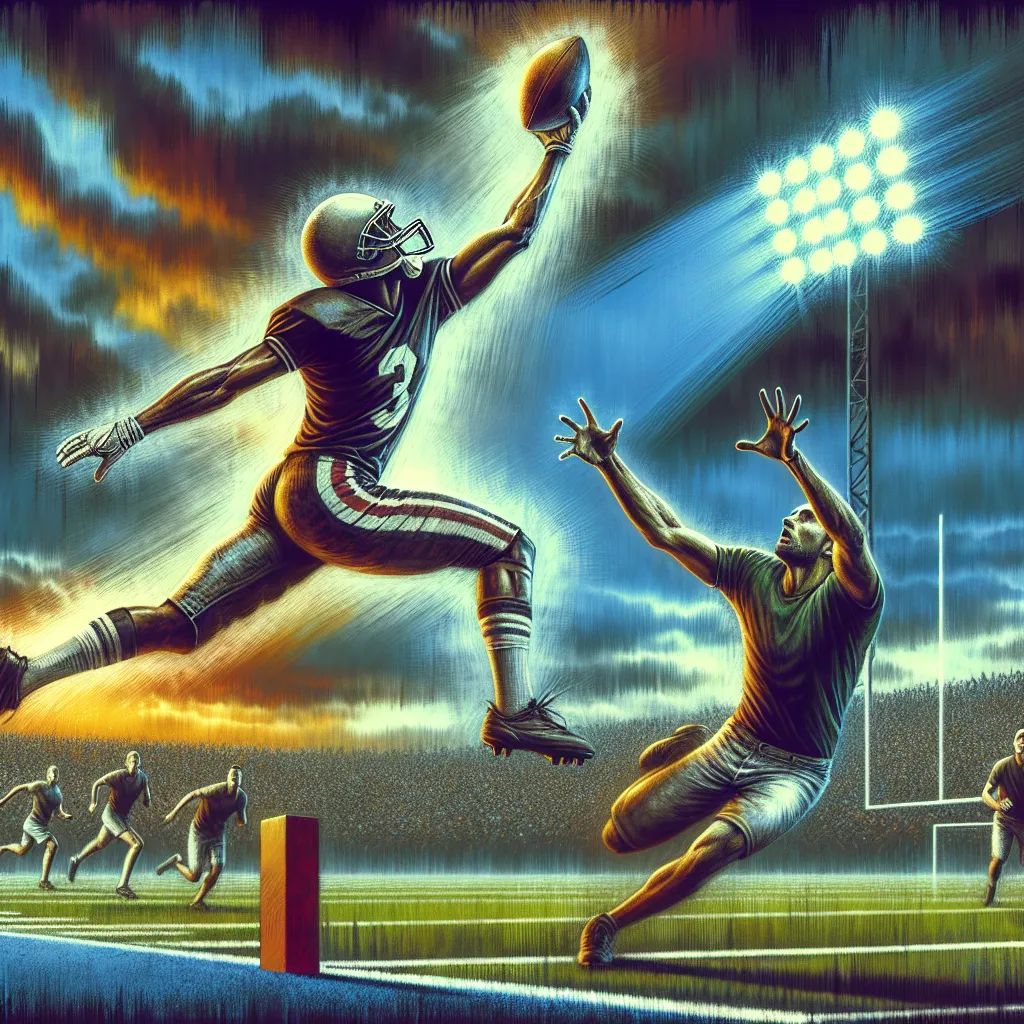
- Published on
- Authors

- Name
- Sports Tips
Adjusting to the Ball: Making Plays on Underthrown and Overthrown Passes
In the high-octane world of football, a receiver's ability to adjust to the ball in mid-air can often mean the difference between a game-winning touchdown and a missed opportunity. It’s a skill that requires a blend of athleticism, awareness, and precise technique. This article delves into the essential methods for mastering the art of adjusting to both underthrown and overthrown passes.
Key Techniques to Adjust in Mid-Air
Body Control
Body control is paramount when making aerial adjustments. Here are crucial aspects:
Balance and Coordination:
- Maintain a low center of gravity during the route.
- Use subtle, quick steps to keep balance without sacrificing speed.
Core Strength:
- Strong core muscles help in stability and quick direction changes in mid-air.
- Practice exercises like planks, Russian twists, and medicine ball throws.
Positioning
Effective positioning is about anticipating the pass and getting into the best spot to make the catch:
Tracking the Ball:
- Keep your eyes on the quarterback and the ball from the moment it’s thrown.
- Use peripheral vision to monitor defenders while focusing on the ball.
Adjusting Routes:
- For underthrown balls, plant your foot quickly and come back towards the quarterback.
- For overthrown balls, accelerate and stretch out to maximize your reach.
Making the Catch
Securing the catch often involves improvisation and quick reflexes:
High-Pointing:
- For overthrown balls, jump and extend your arms fully to catch at the highest point.
- Use your fingertips to secure the ball, then pull it in quickly.
Low Catches:
- For underthrown balls, get low quickly by bending your knees.
- Use your body to shield the ball from defenders while keeping your eyes on it until secured.
| Technique | Underthrown Pass | Overthrown Pass |
|---|---|---|
| Footwork | Plant foot and come back towards QB | Maximum acceleration, stretch hands forward |
| Body | Keep low center of gravity, prepare to dive | Maintain upright posture, prepare to jump |
| Eyes | Focus on ball coming short and defenders | Track ball over the shoulder, watch for height |
| Hands | Scoop low, fingers under the ball | High-point catch, fingers extended up |
Drills to Improve Adjustment Skills
Reaction Drills
- Ball Reaction Drill:
- Have a coach randomly throw balls in various directions.
- Focus on quick adjustments and catching at different angles.
Route Running Adjustment Drills
- Comeback Routes:
- Practice running deep routes and then breaking back quickly on underthrown signals.
- This helps in building muscle memory for in-game adjustments.
Plyometric Exercises
To enhance explosive movement and jumping abilities:
Box Jumps:
- Improve leg strength and explosiveness.
- Focus on quick, explosive jumps to simulate high-point catches.
Lateral Bounds:
- Strengthen lateral movement to help with adjusting routes.
- Emphasize on quick push-offs and maintaining balance.
Conclusion
The ability to adeptly adjust to underthrown and overthrown passes is a skill that can elevate a receiver's game to elite levels. By focusing on body control, perfect positioning, and improvising mid-air catches, players can optimize their efficacy on the field. Consistent practice of these techniques and integrating specific drills into training can make a significant impact. Remember, it's not just about getting open—it's about making the catch, no matter how perfectly or imperfectly the ball is thrown.
Train hard, stay focused, and seize every opportunity that comes your way on the gridiron.
